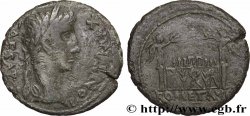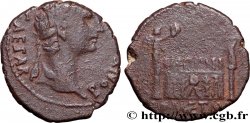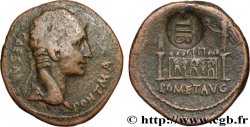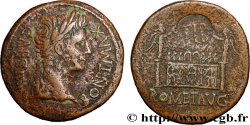bga_348136 - LVGDVNVM - LYON - AVGVSTVS As à l'autel de Lyon - faux d’époque en Fer
недоступный.
Товар уже продан в нашем интернет-магазине (2015)
Цена: : 125.00 €
Товар уже продан в нашем интернет-магазине (2015)
Цена: : 125.00 €
Тип As à l'autel de Lyon - faux d’époque en Fer
Дата: c. 7-3 AC.
Монетный двор / Город: Lyon
Металл: iron
Диаметр: 24,5 mm
Ориентация осей монеты: 10 h.
Вес: 7,39 g.
Редкость: R3
Officine: 1re
Комментарии о состоянии
Avec une flan de fer, recouvert d’une pellicule de bronze, cet as est donc magnétique. La pellicule de bronze est partiellement soulevée par endroits, avec quelques concrétions. Monnaie ayant subi un traitement de surface et une stabilisation de qualité
Ссылки в каталоге: :
LT.- - BN.4703 - C.240 (2f.) - RIC.230 - RPC.- - Giard/L1.73 /16 - BN/R.1479 - RCV.1690 (480$) - MRK.2 /103
Лицевая сторона
Аверс: легенда: CAESAR - PONT MAX.
Аверс: описание: Tête laurée d’Auguste à droite (O*).
Аверс: перевод: “Cæsar Pontifex Maximus”, (César grand pontife).
Обратная сторона
Реверс: легенда: ROM ET AVG.
Реверс: Описание: Autel de Lyon.
Реверс: перевод: “Romæ et Augusti”, (À Rome et Auguste).
Комментарий
Monnaie particulièrement intéressante, probablement fausse d’époque. Les bronzes fourrés de fer sont très rares, quelques exemplaires sont recensés pour les monnaies romaines, mais ce phénomène ne semble pas avoir été observé pour les monnaies gauloises.
L’autel du revers est particulièrement net et finement détaillé, mais le style permet d’affirmer sans risque qu’il s’agit d’une imitation.
A particularly interesting coin, probably a counterfeit from the period. Iron-filled bronzes are very rare; a few examples have been recorded for Roman coins, but this phenomenon does not seem to have been observed for Gallic coins. The altar on the reverse is particularly clear and finely detailed, but the style allows us to safely assert that it is an imitation.
L’autel du revers est particulièrement net et finement détaillé, mais le style permet d’affirmer sans risque qu’il s’agit d’une imitation.
A particularly interesting coin, probably a counterfeit from the period. Iron-filled bronzes are very rare; a few examples have been recorded for Roman coins, but this phenomenon does not seem to have been observed for Gallic coins. The altar on the reverse is particularly clear and finely detailed, but the style allows us to safely assert that it is an imitation.







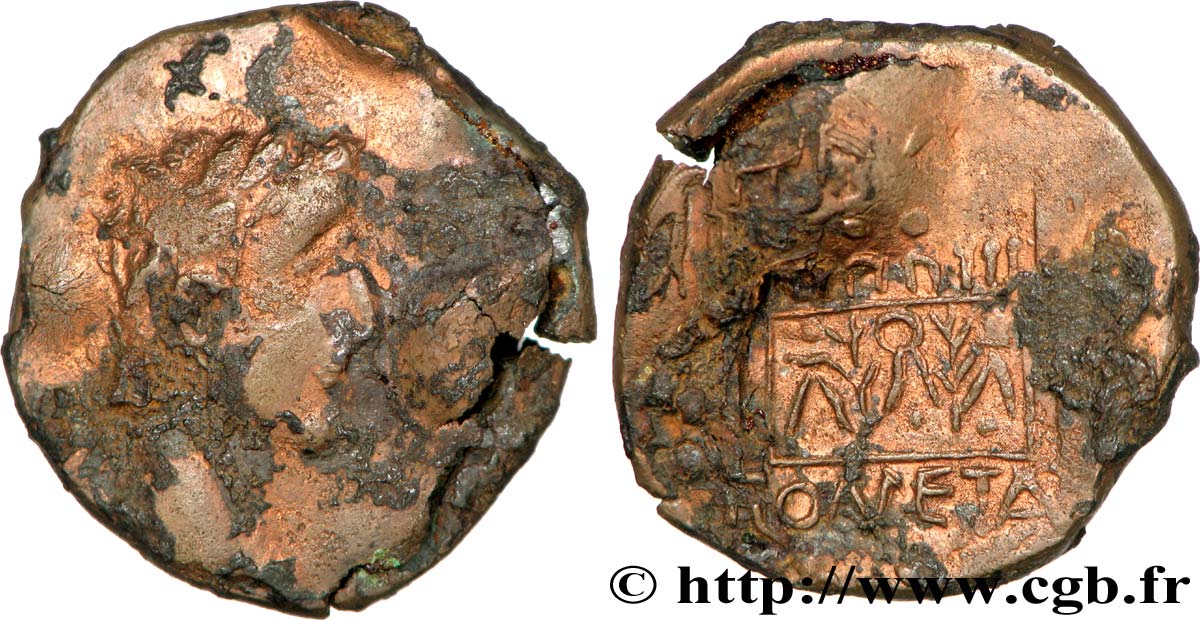
 Cообщить об ошибке
Cообщить об ошибке Распечатать страницу
Распечатать страницу Отправить мой выбор
Отправить мой выбор Задать вопрос
Задать вопрос Consign / sell
Consign / sell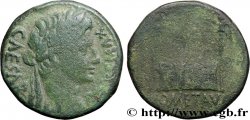
 Информация
Информация
